Mango is the national fruit of India. Mango is a pulpy and juicy fruit known as the king of fruits. It contains wide varieties, and they have different tastes, colors, and sizes. Aside from being a good source of vitamins A and C, it has an excellent flavor, a beautiful fragrance, and a delicious taste. Moreover, the mango tree is hardy and requires low maintenance among other fruit plants.
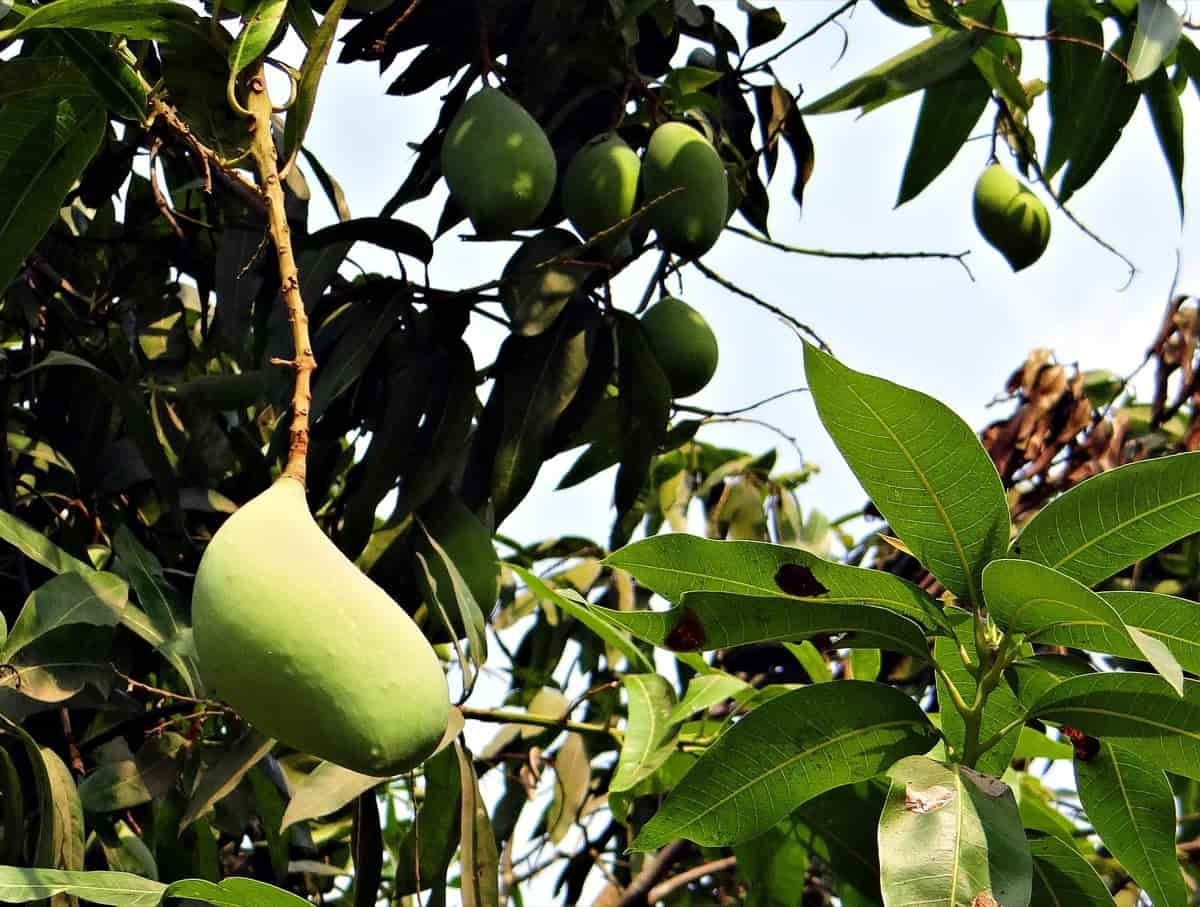
India takes pride in cultivating over 1500 Varieties of mangoes, of which 1000 of them are commercially grown. Among fruit cultivation, mango takes nearly 50% of the land holdings in India. The fruits are exported worldwide today, and farmers are getting more profit with increased technology, better growing practices, and the market worldwide.
Totapuri Mango farming in India
Totapuri Mango
- Totapuri Mangoes (Mangifera indica) are oblong with a pointed base and have a fiery golden yellow color reminiscent of flames.
- Totapuri is the name given to the fruit because of its curved shape resembling a beak. The powerful health benefits of Totapuri Mango Pulp/Concentrate make it an essential food item.
- Mangoes do not all taste sweet; Totapuri is an exception due to its tangy taste.
- A tempered seasoning of salt and chili enhances its tangy taste and chewy texture.
- When Totapuri mangoes ripen, their skin turns yellow, and their pulp turns yellowish-orange. Weights range from 250 g to 500 g per piece.
- Totapuri mangoes are famous for processing and known for their delicious pulp and fascinating color.
- Combining Totapuri mango concentrate’s acidic content with other ingredients is convenient. In addition, because Totapuri mango pulp/concentrate is extracted from mature, ripe, and high-quality mangoes, it is of superior quality.
- From May through July, these mangoes are available. In addition, Totapuri mangoes, with their distinctive tastes and aromas, are also available in our country.
- There are several names for these mangoes grown in south India, including Ginimoothi, Sandarsha, and Totapari.
- Several states cultivate this mango variety extensively, including Andhra Pradesh, Gujarat, Karnataka, and Tamil Nadu.
- In contrast to traditional farming techniques that require little to no maintenance, high-density farming can yield 9-10 tonnes per acre.
Totapuri Mango cultivating states in India
Most of it is grown in south India, in Andhra Pradesh, Gujarat, Karnataka, Tamilnadu, Telangana, and Maharashtra. Approximately 50-60 pulp industries take large quantities of Totapuri mangoes, which most farmers cultivate. Consequently, farmers get good returns from this variety. Traders usually visit Mango markets in Damalacheruvu, Tirupati, Bangarupalyam, and Puttur from Madhya Pradesh, Uttar Pradesh, Maharashtra, Karnataka, and Punjab. A flowering stage begins in December, followed by the development of unripe fruit.
Soil requirements for Totapuri Mango
- Mango trees’ vigor and cropping behavior are affected by soil type.
- All soil types, provided they are deep and well-drained, are suitable for mangoes.
- It is ideal to have soils that are red and loamy. Mango trees do best in soils with a pH between 6.5 and 7.5.
- Mango crops cannot be grown successfully on alkaline, ill-drained soils with rocky substrata.
- India’s lateritic, alluvial, and other soil types are suitable for mango cultivation.
- Rich, medium, and well-drained soils produce the best results.
- A hard substratum with very poor, stony soil should be avoided.
- The best-quality fruits are grown on soils containing 5 to 10 percent lime and sufficient quantities of peroxide of iron.
Climate conditions for Totapuri Mango
Climates such as tropical and subtropical are very well suited to mangoes. From the sea level to an altitude of 600 meters, it can thrive in nearly all parts of the country. A temperature range of 24 -30 °C and high humidity is ideal for mangoes during the growing season. The ideal rainfall range for growing mangoes is 890-1015 mm annually.
However, mangoes can be grown in regions with heavy rainfall (2540 mm) and scant rainfall (254 mm). A dry climate before blooming promotes profuse flowering. When it rains during flowering, pollination is impeded, which is detrimental to the crop.
In case you missed it: Banganapalli Mango Farming in India: A Guide to Planting, Care, Pests and Disease Management
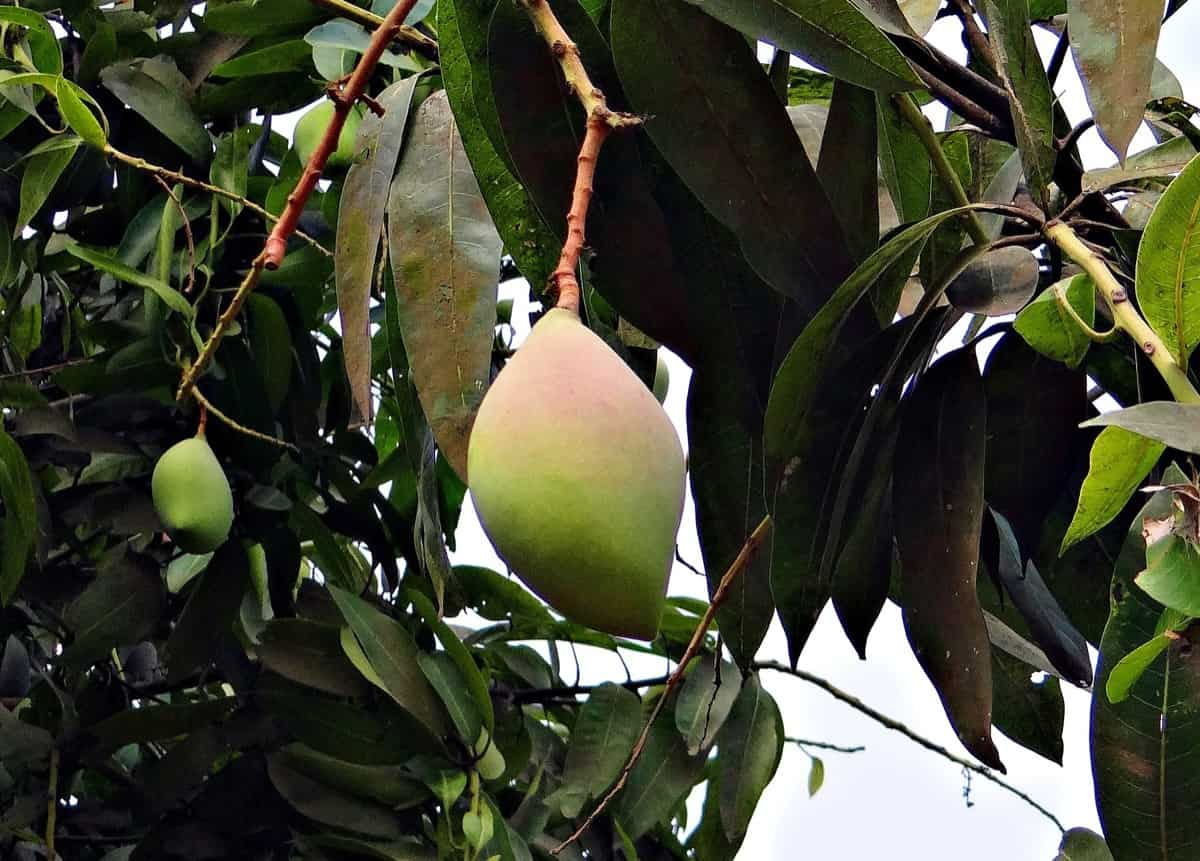
Spacing and Sowing Depth for Totapuri Mango
For grafted varieties, use the distance of 9m x 9m and plant them in a square system. Dug pits of 1x1x1m size one month earlier before planting. Expose them to the sun. Fill with a mixture of soil, 30 to 40 kg of Farm yard manure or Compost, and 1 kg single super phosphate.
Time of sowing and method of sowing
Planting is done in the month of August-September and also in February – March. Do planting in cool hours of the evening. Protect crops from high wind. Square and hexagonal planting can be adopted. However, hexagonal planting accommodates 15% more plants.
Planting in the field
- Plants should only be lifted from a nursery if they are well-sized and healthy. For example, 80 percent of an earth ball’s feeder and tap root systems should be lifted.
- The earth ball mustn’t become too large during transportation, so it does not break. The plants should be transported in plastic bags measuring 30 X 15 cm from distant nurseries. Before placing the lifted earth ball in the bags, some quality soil and Farm Yard manure mixture can be added.
- Earth balls are better wrapped with this than with trash or grass. It is recommended that plants be packed in plastic or wooden containers (unless polythene bags can be obtained) or in crates. Doing so will make it easier to determine whether earth balls will break during transportation.
- After removing the packing material, the earth ball should be placed in the center of the prepared pits. Earth balls should have an upper surface that is level with the soil in the field. It is important not to plant too high or too low in the prepared pits.
- It is important not to press the original earth balls when planting the newly-planted plants. Instead, level the surroundings immediately after planting and apply light irrigation.
Totapuri Mango crop care
Irrigation in Mango farming
- Mango trees require less water than other commercial fruit farming methods, such as banana farming. If you are starting a mango farming business for the first time, you should irrigate your mango farms for two to three days per week.
- However, they require about two irrigations when they begin to bear fruit. Therefore, it is recommended to apply irrigation every 5 to 7 days in the summer and every 25 to 30 days in the winter.
- In the rainy season, apply irrigation based on the intensity of rainfall. Fruit-bearing trees required irrigation at intervals of 10-12 days during fruit development.
- It is recommended to stop irrigation once they have reached full growth. During the flowering stage, you should take proper care. It would be best if you stopped giving them water during this stage.
- However, if irrigation is not stopped, mango fruit may be of poor quality. Ultimately, you have to consider the soil in which you’re growing as well as the maturity of the mango tree itself.
In case you missed it: A Guide to Understanding Mango Tree Propagation: From Seed, Cuttings, Grafting, and Budding
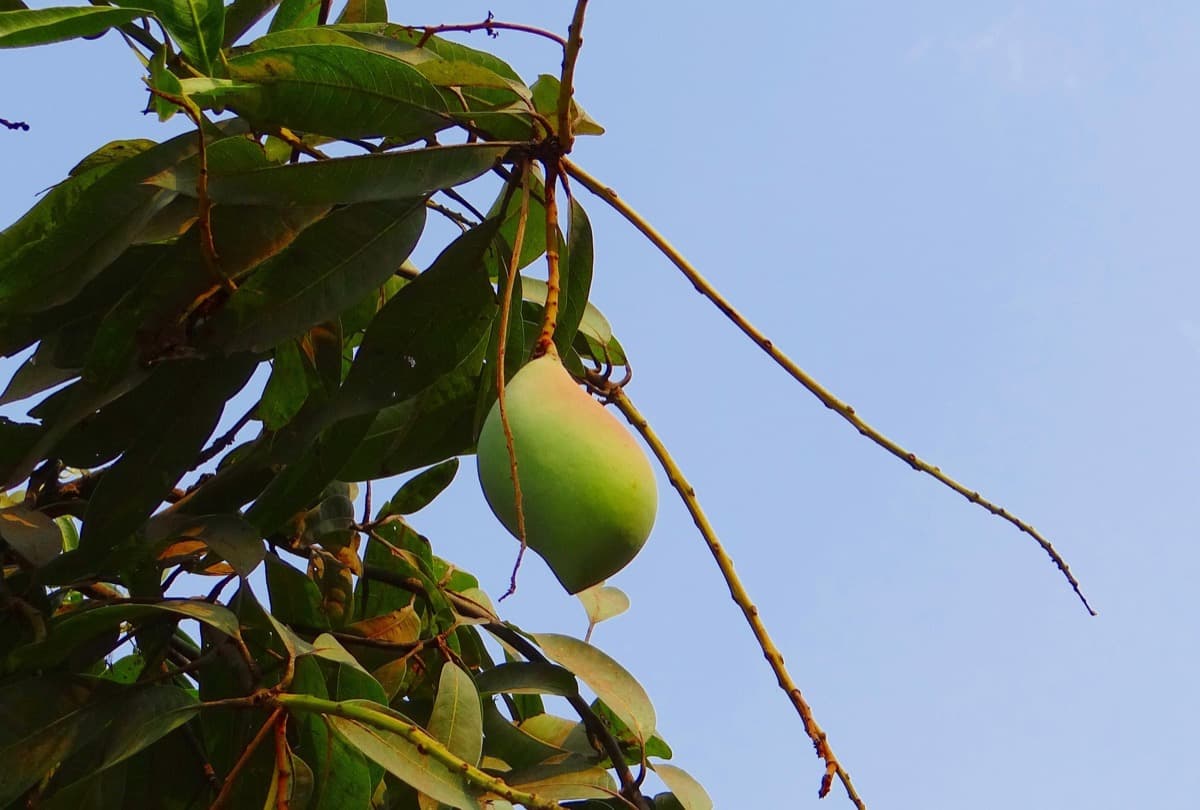
Fertilizers application in Totapuri mango crop
Slow-release fertilizers are granules coated with polymer or sulfur that dissolve into the soil after eight to twelve weeks. A soluble rapid-release fertilizer is generally less expensive than a slow-release fertilizer because it enters the soil instantly. All three nutrients are contained in a complete fertilizer—a mango root’s ability to absorb iron and other minerals increases when they are chelated.
- Manganese trees need a balanced fertilizer containing magnesium, sulfur, boron, and trace elements in the ratio of 14-14-14 or 10-20-20.
- The mango tree needs more nitrogen when young but less when it starts to bear fruit.
- Too much nitrogen in fruiting mango trees will result in mainly vegetative growth and fewer fruits or fruits of poor quality.
- Mix cow manure yearly to add natural nutrients and improve the soil’s moisture-holding capacity.
- It is very good to fertilize mango trees with citrus tree fertilizer. This fertilizer has a good balance of NPK, micronutrients, and trace elements.
Training and pruning
- You must remove low-lying branches and rootstock sprouts. Ensure old trees have good sunlight and aeration by removing overlapping, intercrossing, diseased, dried, and weak branches.
- Once every three years, pruning may be done on the internal branches in August and September. Until three years have passed, flowering should not be allowed.
- During August-September, weak shoots are trimmed to retain two healthy shoots among crowded terminal shoots.
Weed control in Totapuri mango field
The first three to four years after transplanting are crucial for mango plant growth. In mango orchards, applying organic manure and inorganic fertilizers, irrigating regularly, and receiving good sunshine will encourage grassy and broad-leaf weeds to grow. As a result, it is essential to keep weeds under control twice a year to ensure the health and productivity of mango orchards.
In addition, young trees receive more sunlight at the ground level, which causes perennial grassy weeds to grow. The tree canopy grows and shades more area beneath trees, allowing shade-loving weeds to grow. Diuron is applied at 2.7 and 3.7 kg/acre as a pre-emergent treatment in mango orchards for 24 weeks. Dicot and monocot weeds were also controlled effectively with bromacil and 2,2-Dichloropropionic acid.
In mango orchards (one to five years old), one spray of atrazine or diuron as a pre-emergent treatment to soil and 1.2 kg of paraquat as a post-emergent spray on weeds six months after the soil treatment. It is effective in controlling both monocot and dicot weeds for one year.
Intercropping or fillers
Usually, mangoes are planted wide apart and have a juvenile period of 4-5 years. Hence, the interspaces can profitably be utilized for the growing of crops. Therefore, select the intercrop very carefully. Aeration and moisture are necessary for the proper development of the root system and canopy of the young plants. Therefore, it will be beneficial to remove weeds from the basins periodically. However, intercrop should not interfere with the mango plants for nutrition, light, and moisture.
In case you missed it: A Step-By-Step Guide to High Density Fruit Farming: For Guava, Banana, Mango, Pineapple, Lemon, Papaya, Litchi, and Apple
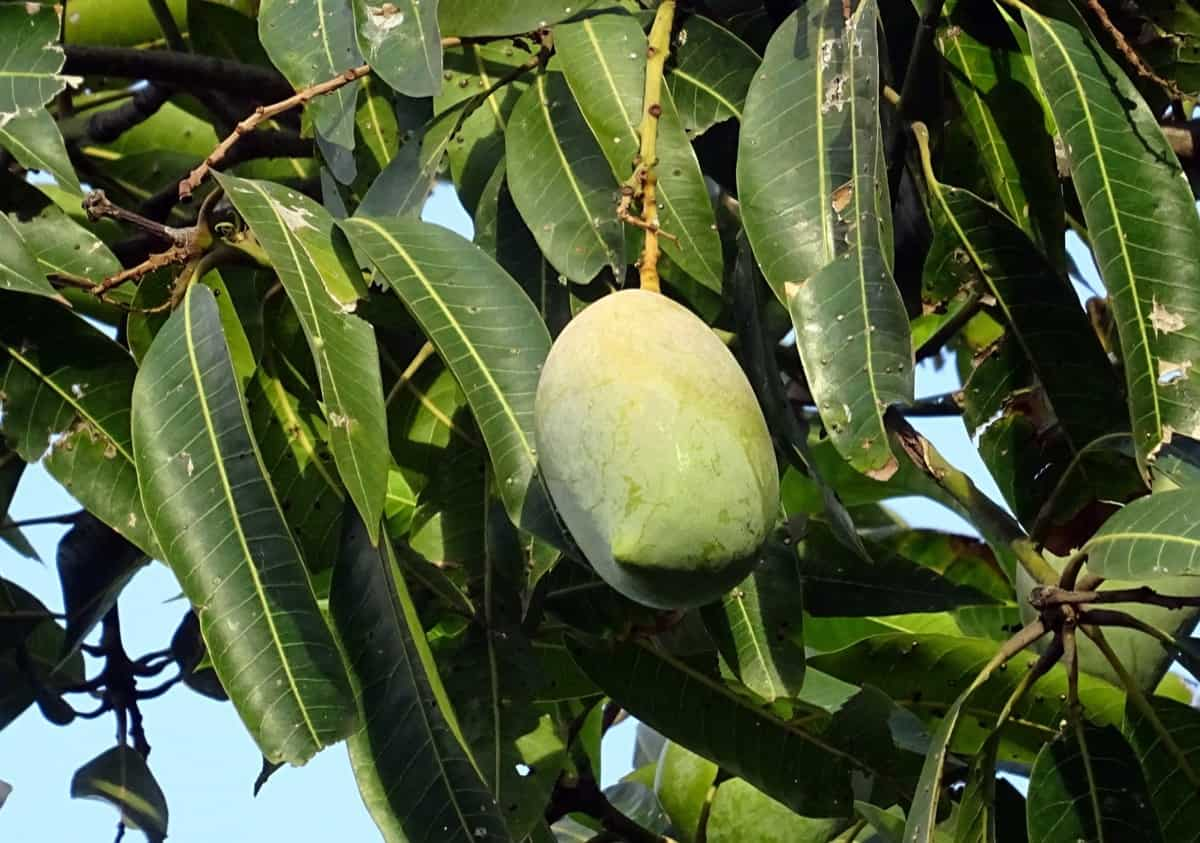
Therefore, Intercrops can be grown for the plants’ first 4-5 years of age. A newly planted crop should be weeded and earthed up. Then, intercrop can be taken until the plant gets well acquainted with the surrounding atmosphere up to the plant’s bearing. Depending upon the variety, it will take 5-6years. Intercropping helps to minimize weed control. Leguminous crops like moong, mash, gram, and Lentil can be taken as intercrop.
Also, crops like onion, tomato, Radish, beans, cauliflower, and cabbage are useful for intercropping. Avoid Bajra, maize, and sugarcane as intercropped. Wheat can be sown by providing a separate irrigation system for the mango plants. Pulses like grams and massar should be preferred. In the Kharif season, Moong or Arhar should be grown. Vegetable growing can be more useful than intercrops.
In Uttar Pradesh, Sugarcane and poplar are being grown as intercrops. Fillers are a good alternative to intercrops. For example, fruit plants like Plums, Peaches, and Papaya can be planted as filler in mango plantations. Mango is a slow-growing fruit crop. Hence, mango can be used as a filler, which should be removed when it starts interfering with the main plants.
Diseases of Totapuri Mango
Powdery mildew
Damage symptoms
- This fungus attacks leaves, flowers, panicle stalks, and fruits
- Severe disease results in the shedding of infected leaves.
- Fruits affected by this condition do not grow in size and may drop before reaching the size of peas.
- In affected leaves, the mycelium remains dormant
- Airborne conidia cause the secondary spread
Control methods
- Applying Sulphur dust (350 mesh) in the early morning will protect the new flush.
- Spray Wettable sulfur 0.2%, or Tridemorph 0.05% will control powdery mildew.
Anthracnose
Damage symptoms
- Infects plants with leaf spots, blossom blights, wither tips, twigs blights, and fruit rots
- Small blister-like spots appear on the leaves and twigs—withering and drying young leaves. A die-back symptom appears as tender twigs wither.
- Branches affected by the disease eventually dry up. On fruits, black spots appear.
- At ripening, the fruit pulp becomes hard, cracks, and decays. Fruits infected with the disease drop off
Control methods
Pre-harvest spraying of Mancozeb 2g/lit or Carbendazim 1g/lit or Thiophanate methyl 1g/lit or Chlorothalonil 2 g/lit, three times at 15 days intervals will control anthracnose and stalk end-rot
Sooty mold
Damage symptoms
- Fungi produce mycelium, a surface layer that is dark and superficial. In addition, sugary secretions from plant hoppers fuel their rowing. Consequently, black encrustation forms, affecting photosynthetic activity.
- Aphids, jassids, and scale insects secrete sugary substances on the leaf surface that the fungus feeds on.
Control methods
Spraying Phosphamidon 40 SL at 2 ml/liter + Maida 5% (1 kg Maida or starch) boiled with one lit of water and diluted to 20 liters will control the incidence of sooty mold. Avoid spraying during cloudy weather.
In case you missed it: Mango Farming in Mexico: How to Start, Planting to Harvesting, and Production Guide
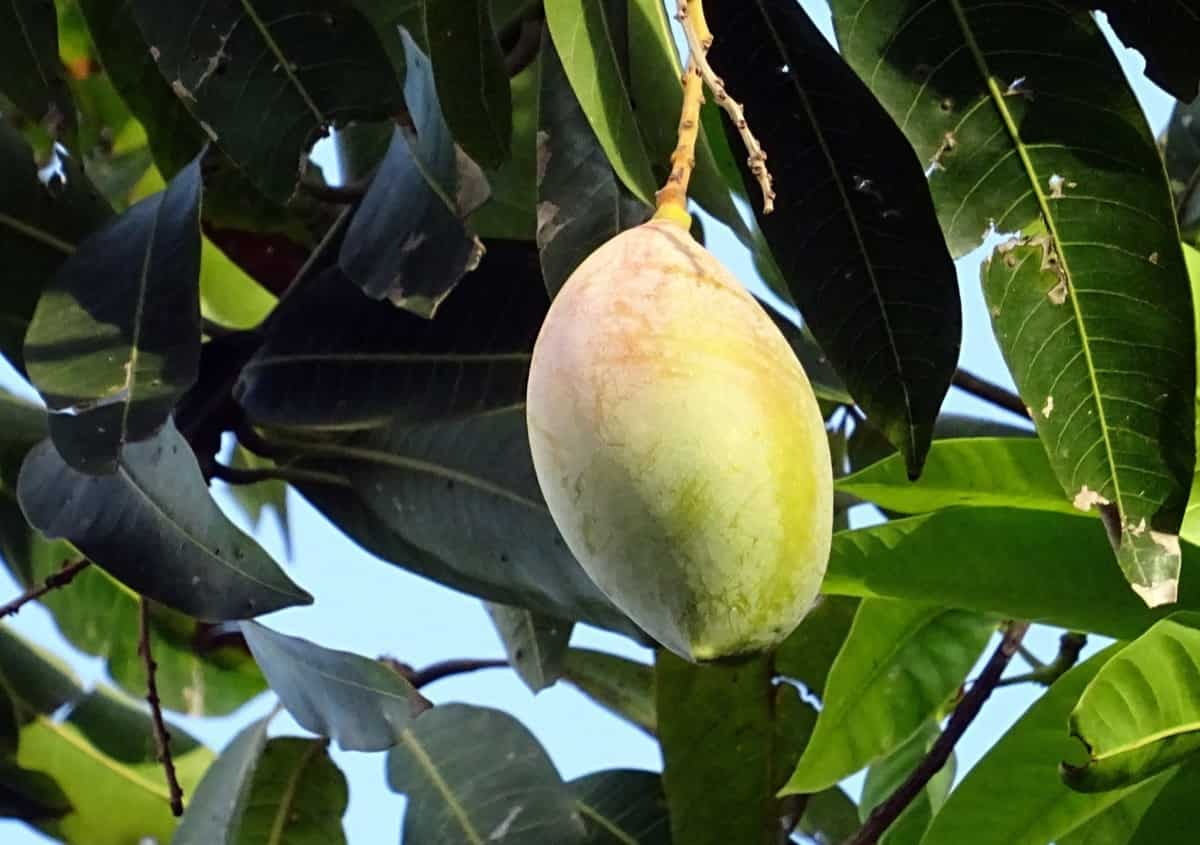
Stem end rot
Damage symptoms
- Around the base of the pedicel, there is a dark epicarp
- Initially, a circular, black patch forms on the affected area
- Within two or three days, the whole fruit turns black in a humid atmosphere.
- As the pulp ages, it becomes browner and softer.
Control methods
- Dip mangoes in 6 percent borax solution at 43°C for 3 minutes.
- Harvest mangoes on a clear dry day.
- An injury should be avoided to fruits at all stages of handling.
Pests in Totapuri Mango
Mango stem borer
Damage symptoms
- A grub tunnel is found in the sapwood of a tree’s trunk or branches
- In the early stages of growth, the terminal shoot is dried
- There are several points where frost comes out, and sometimes sap oozes out as well
- Branches or the entire tree can wilt
Control methods
- Padding with monocrotophos 36 WSC 10 ml in 2.5 cm /tree soaked in absorbent cotton.
- Apply the copper oxychloride paste on the tree’s trunk if severe infestations occur.
- Hook out the grub from the borehole – apply monocrotophos 36 WSC 10 to 20 ml/ hole
Mango nut weevil
Damage symptoms
- Grub makes pulp tunnels in zigzag patterns
- Bores into cotyledons and eats unripe tissue
- Dropping of fruit at marble stage
- A marble-sized fruit may have oviposition injuries.
- Tunneled cotyledons in mature fruit caused by grubs
Control methods
- Collect and destroy the fallen fruits
- Spray application of fenthion 100EC 1ml/l; (first at the marble stage of the fruit, second at 15 days intervals).
- During the non-flowering season, direct spray toward the base of the trunk
Inflorescence midge
Damage symptoms
- Larvae attack the inflorescence stalk, flowers, and small developing fruits
- Maggot bore into the bud and feeds on the inner content
- Buds fail to open and drop down
Control methods
- Remove and destroy affected flowers and tender shoots
- Spray dimethoate 30 EC at 0.06%, methyl demeton 25 EC at 0.05%
Shoot gall psyllid
Damage symptoms
- As nymphs emerge from adjacent buds during August and September, they suck the sap from their cells.
- In response to feeding, buds become hard, conical green galls.
- Galls usually appear between September and October. As a result, there is no flowering or fruit set. In the galls, nymphs spend the winter
Control methods
- Treat the bark with dimethoate paste (0.03%) to decimate the psyllids moving up and down the tree.
- Injection of dimethoate into the bark might also work. At the early stages of psyllid infestation, foliar sprays based on this pesticide also show good results.
In case you missed it: Top 14 Steps to Boost Mango Fruit Yield: Methods, Yield Improving Tips, Fertilizer to Increase Fruit Size
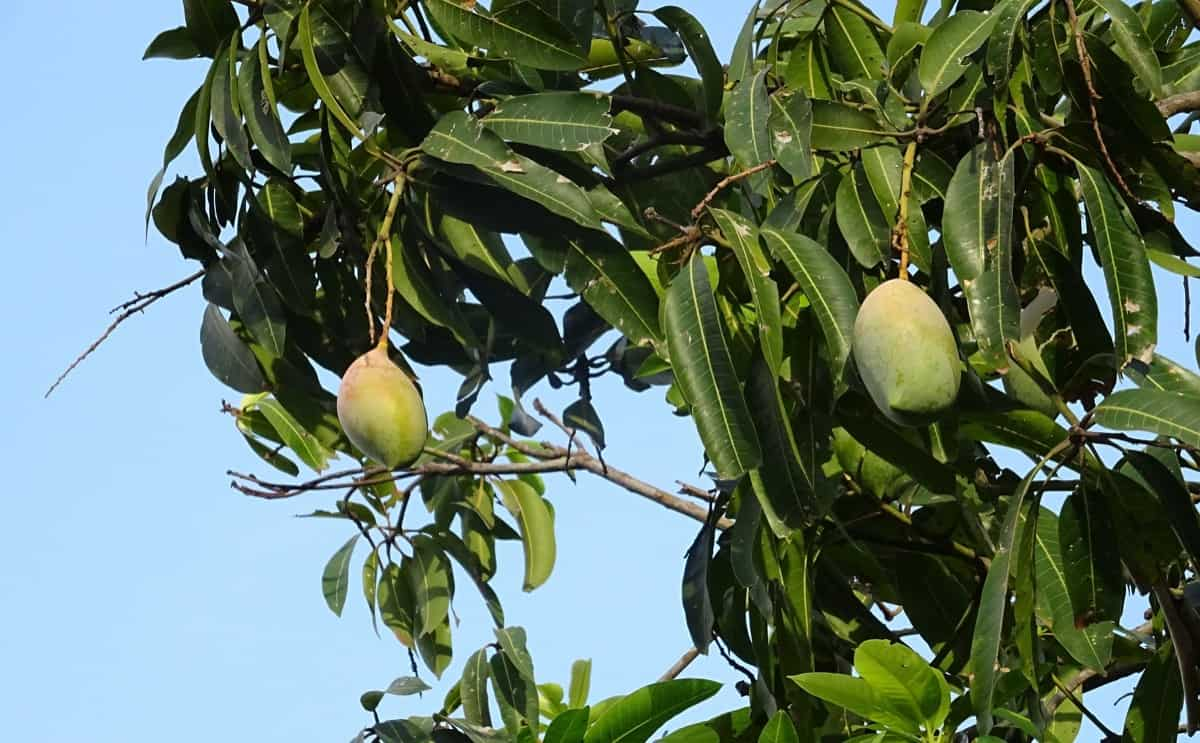
Time of Totapuri fruit maturity in India
It is generally recommended to harvest mangoes at a physiologically mature stage and allow them to ripen to their optimum quality. Fruits are picked by hand or plucked by harvesters. As the latex drips down the surface of the fruit during harvesting, the fruit appears shabby after storage. Therefore, fruits should be harvested with the stem attached 10-20 cm long. For transport to the packing shed, harvested mangoes should be placed in field containers with a capacity of 25 kg. When harvesting the fruit, please keep it in the shade and handle it with care at all times
| Month | States |
| February – July | Andhra Pradesh. |
| April – July | Gujrat, Maharashtra, Tamil Nadu. |
| May-August | Bihar, Karnataka, Madhya Pradesh, and West Bengal. |
| June – August | Uttar Pradesh, Haryana, Punjab, and Rajasthan. |
| July – September | Himachal Pradesh and Jammu Kashmir. |
Conclusion
Because of their delicious taste and intriguing color, Totapuri mangoes are famous for processing. In addition, Totapuri mango concentrate’s acidic content makes it convenient to combine. The pulp/concentrate of Totapuri mangoes is extracted from mature, ripe fruits of the highest quality.
- Types of Pesticides Used in Agriculture: A Beginner’s Guide
- Economical Aquaculture: A Guide to Low-Budget Fish Farming
- 15 Common Planting Errors That Can Doom Your Fruit Trees
- How to Make Houseplants Bushy: Effective Tips and Ideas
- Innovative Strategies for Boosting Coconut Pollination and Yield
- Pollination Strategies for Maximum Pumpkin Yield
- The Complete Guide to Chicken Fattening: Strategies for Maximum Growth
- Natural Solutions for Tulip Problems: 100% Effective Remedies for Leaf and Bulb-Related Issues
- Revolutionizing Citrus Preservation: Towards a Healthier, Greener Future
- Natural Solutions for Peony Leaf and Flower Problems: 100% Effective Remedies
- Maximizing Profits with Avocado Contract Farming in India: A Comprehensive Guide
- Natural Solutions for Hydrangea Problems: 100% Effective Remedies for Leaf and Flowers
- The Ultimate Guide to Choosing the Perfect Foliage Friend: Bringing Life Indoors
- From Sunlight to Sustainability: 15 Ways to Use Solar Technology in Agriculture
- The Ultimate Guide to Dong Tao Chicken: Exploring from History to Raising
- The Eco-Friendly Makeover: How to Convert Your Unused Swimming Pool into a Fish Pond
- Mastering the Art of Delaware Chicken Farming: Essentials for Healthy Backyard Flocks
- 20 Best Homemade Fertilizers for Money Plant: DIY Recipes and Application Methods
- How to Craft a Comprehensive Free-Range Chicken Farming Business Plan
- Brighten Your Flock: Raising Easter Egger Chickens for Beauty and Bounty
- How to Optimize Your Poultry Egg Farm Business Plan with These Strategies
- Subsidy for Spirulina Cultivation: How Indian Government Schemes Encouraging Spirulina Farmers
- Ultimate Guide to Raising Dominique Chickens: Breeding, Feeding, Egg-Production, and Care
- Mastering the Art of Raising Jersey Giant Chickens: Care, Feeding, and More
- Ultimate Guide to Raising Legbar Chickens: Breeding, Farming Practices, Diet, Egg-Production
- How to Raise Welsummer Chickens: A Comprehensive Guide for Beginners
- How to Protect Indoor Plants in Winter: A Comprehensive Guide
- Ultimate Guide to Grow Bag Gardening: Tips, Tricks, and Planting Ideas for Urban Gardeners
- Guide to Lotus Cultivation: How to Propagate, Plant, Grow, Care, Cost, and Profit
- Agriculture Drone Subsidy Scheme: Government Kisan Subsidy, License, and How to Apply Online
- Ultimate Guide to Raising Araucana Chickens: Breed Profile, Farming Economics, Diet, and Care
- Bringing Hydroponics to Classroom: Importance, Benefits of Learning for School Students
- Ultimate Guide to Raising Polish Chickens: Breed Profile, Farming Economics, Diet, and Care
- Ultimate Guide to Raising Australorp Chickens: Profile, Farming Economics, Egg Production, Diet, and Care
- Silkie Chicken Farming: Raising Practices, Varieties, Egg Production, Diet, and Care
- Sussex Chicken Farming: Raising Practices, Varieties, Egg Production, Diet and Care